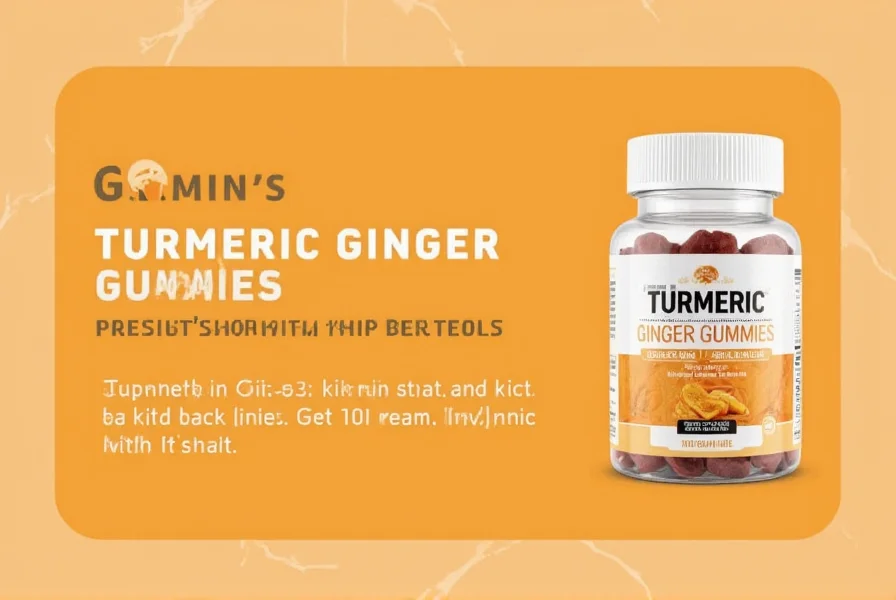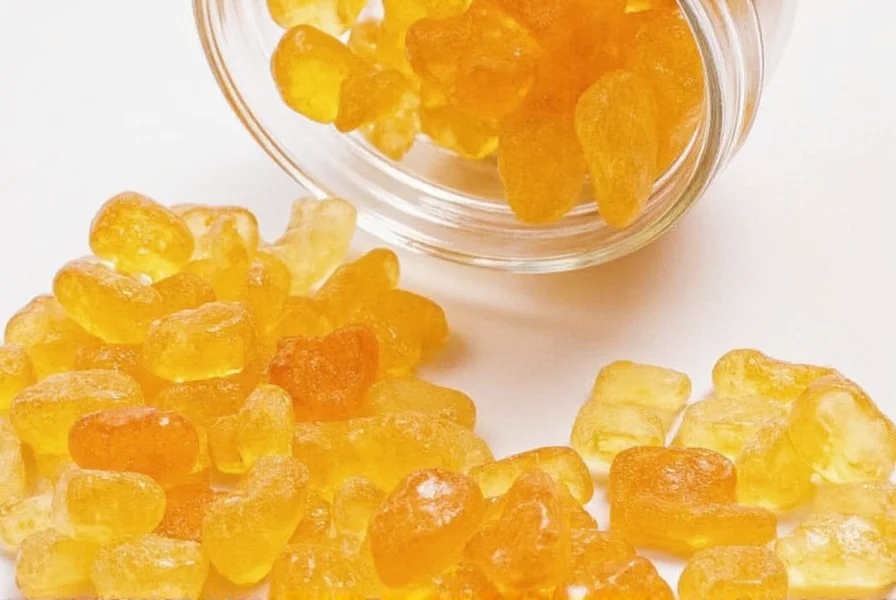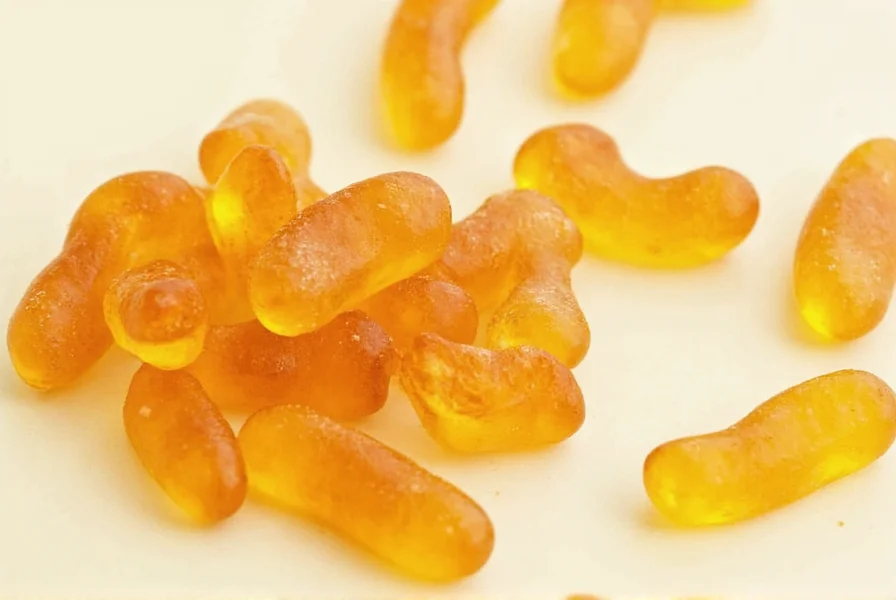Turmeric ginger gummies have gained popularity as a convenient way to consume these traditional botanicals. Understanding their actual benefits, limitations, and scientific backing helps consumers make informed decisions about incorporating them into wellness routines.
The Science Behind Turmeric and Ginger
Turmeric contains curcumin, its primary active compound, which research suggests has anti-inflammatory and antioxidant properties. Ginger's key bioactive components are gingerols and shogaols, which may support digestive health and reduce inflammation. When evaluating turmeric ginger gummies for inflammation support, it's crucial to understand that both botanicals face bioavailability challenges.
Curcumin has notoriously poor absorption when consumed alone. Many quality supplements address this by adding piperine (from black pepper) or using specialized delivery systems. Ginger compounds are generally better absorbed but still benefit from proper formulation. The effectiveness of turmeric ginger supplements largely depends on whether these bioavailability issues have been addressed in the product design.

How Gummy Supplements Compare to Other Formats
When considering turmeric ginger gummies vs capsules, several factors affect their relative effectiveness:
| Supplement Format | Active Compound Concentration | Convenience | Bioavailability Solutions |
|---|---|---|---|
| Gummies | Typically lower (30-50mg curcumin) | High (pleasant taste, easy to take) | Limited (some use liposomal delivery) |
| Capsules | Higher (often 500mg+ curcumin) | Moderate (may cause pill fatigue) | Common (piperine, phospholipids) |
| Powders | Variable (user-controlled dosage) | Low (taste can be strong) | Flexible (can mix with fats for absorption) |
Gummies typically contain lower concentrations of active compounds compared to capsules. A standard turmeric ginger gummy might deliver 30-50mg of curcumin, while capsules often provide 500mg or more. However, gummies offer better compliance for people who struggle with swallowing pills, which can be particularly important for daily turmeric ginger gummy consumption.
What Research Says About Effectiveness
Multiple studies have examined turmeric and ginger individually, though research specifically on gummy formulations is limited. A 2021 systematic review published in Nutrients found that curcumin supplementation significantly reduced markers of inflammation in clinical trials. Similarly, research in Arthritis & Rheumatism showed ginger extract reduced knee pain in osteoarthritis patients.
However, most studies use standardized extracts with enhanced bioavailability, not typical gummy formulations. The scientific evidence for turmeric ginger gummies specifically remains less robust than for higher-dose, bioavailable forms. Consumers should manage expectations accordingly—these supplements may provide modest benefits rather than dramatic results.

Safety Considerations and Potential Interactions
Turmeric and ginger are generally safe for most people when consumed in food amounts. As supplements, they may cause mild digestive upset in some individuals. More importantly, both botanicals can interact with certain medications:
- Blood thinners: Both may increase bleeding risk when combined with medications like warfarin
- Diabetes medications: May enhance blood sugar-lowering effects
- Acid-reducing drugs: Ginger may interfere with proton pump inhibitors
People with gallbladder issues should exercise caution with turmeric, as it may stimulate bile production. Those considering turmeric ginger gummies for arthritis pain while taking prescription medications should consult their healthcare provider first.
Evaluating Product Quality
Not all turmeric ginger gummies deliver equal value. When assessing products, look for:
- Standardized extracts: Indicates consistent active compound levels
- Third-party testing: Verification from NSF, USP, or ConsumerLab
- Bioavailability enhancers: Piperine or other absorption-boosting ingredients
- Transparent labeling: Clear amounts of curcumin and gingerols per serving
Avoid products making exaggerated claims like "cures arthritis" or "replaces medication." Reputable turmeric ginger gummy brands provide realistic expectations based on scientific evidence. Check for manufacturing certifications (GMP) which indicate quality control standards.
Realistic Expectations for Users
Turmeric ginger gummies work best as part of a comprehensive wellness approach rather than standalone solutions. For digestive health support with turmeric ginger, consistent daily use over several weeks typically yields better results than sporadic consumption. Manage expectations by understanding that supplement effects are generally subtle and cumulative.
Individual responses vary significantly based on genetics, health status, and lifestyle factors. Some people notice improvements in joint comfort within weeks, while others may not experience noticeable benefits. Tracking symptoms before and during use provides the most accurate assessment of personal effectiveness.
Frequently Asked Questions
How long does it take for turmeric ginger gummies to work?
Most people need consistent daily use for 4-8 weeks to notice potential benefits. Research suggests curcumin may take 4-12 weeks to significantly reduce inflammation markers. Individual results vary based on health status, dosage, and product quality. Tracking symptoms regularly provides the best assessment of personal effectiveness.
Can turmeric ginger gummies help with joint pain?
Some clinical evidence supports turmeric and ginger for joint discomfort. Studies show curcumin may reduce osteoarthritis pain by 40-60% in some individuals. However, gummies typically contain lower doses than those used in research. For meaningful joint support, choose gummies with at least 50mg of standardized curcumin extract per serving and consistent daily use.
Are turmeric ginger gummies safe for daily use?
For most healthy adults, daily use at recommended doses appears safe. The typical daily dose in gummies (30-100mg curcumin, 50-150mg ginger extract) falls well below safety thresholds. However, long-term safety data specifically for gummy formulations is limited. Consult a healthcare provider if you have gallbladder issues, take blood thinners, or have diabetes before regular use.
Do turmeric ginger gummies have side effects?
Most people tolerate them well, but some experience mild digestive effects like heartburn or gas. Higher-quality products with standardized extracts tend to cause fewer issues. The sugar content in some gummies may concern people monitoring carbohydrate intake. Always check ingredient labels for potential allergens or additives that might cause reactions.











 浙公网安备
33010002000092号
浙公网安备
33010002000092号 浙B2-20120091-4
浙B2-20120091-4